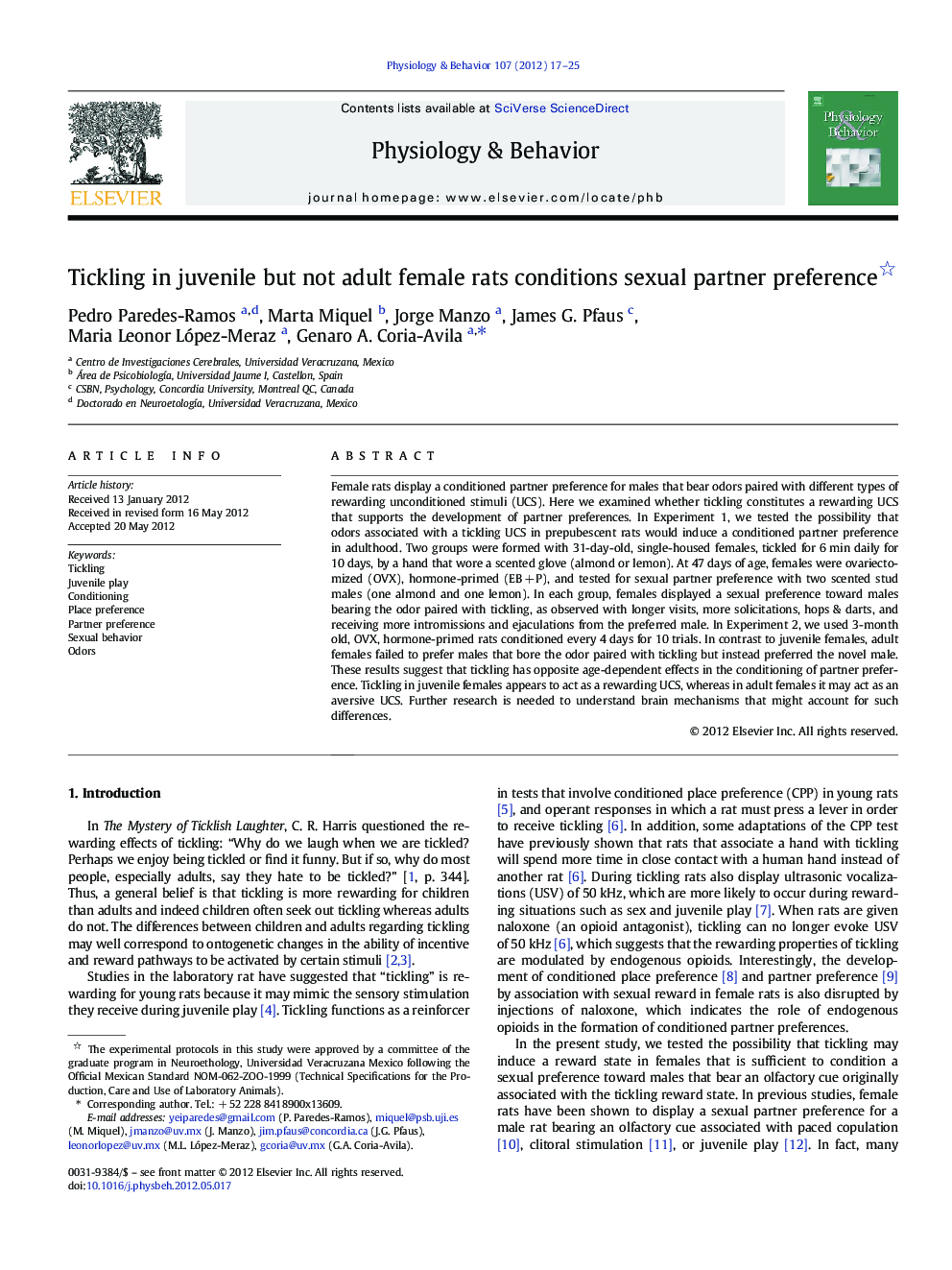| کد مقاله | کد نشریه | سال انتشار | مقاله انگلیسی | نسخه تمام متن |
|---|---|---|---|---|
| 2844440 | 1166335 | 2012 | 9 صفحه PDF | دانلود رایگان |

Female rats display a conditioned partner preference for males that bear odors paired with different types of rewarding unconditioned stimuli (UCS). Here we examined whether tickling constitutes a rewarding UCS that supports the development of partner preferences. In Experiment 1, we tested the possibility that odors associated with a tickling UCS in prepubescent rats would induce a conditioned partner preference in adulthood. Two groups were formed with 31-day-old, single-housed females, tickled for 6 min daily for 10 days, by a hand that wore a scented glove (almond or lemon). At 47 days of age, females were ovariectomized (OVX), hormone-primed (EB + P), and tested for sexual partner preference with two scented stud males (one almond and one lemon). In each group, females displayed a sexual preference toward males bearing the odor paired with tickling, as observed with longer visits, more solicitations, hops & darts, and receiving more intromissions and ejaculations from the preferred male. In Experiment 2, we used 3-month old, OVX, hormone-primed rats conditioned every 4 days for 10 trials. In contrast to juvenile females, adult females failed to prefer males that bore the odor paired with tickling but instead preferred the novel male. These results suggest that tickling has opposite age-dependent effects in the conditioning of partner preference. Tickling in juvenile females appears to act as a rewarding UCS, whereas in adult females it may act as an aversive UCS. Further research is needed to understand brain mechanisms that might account for such differences.
► A neutral odor was paired in contingency with tickling in juvenile rats.
► In adulthood they showed a sexual preference for males with the conditioned odor.
► A neutral odor was paired in contingency with tickling in adult rats.
► They showed partner aversion for males with the conditioned odor.
► Tickling conditions sexual partner preference in juvenile, but not in adult females.
Journal: Physiology & Behavior - Volume 107, Issue 1, 20 August 2012, Pages 17–25